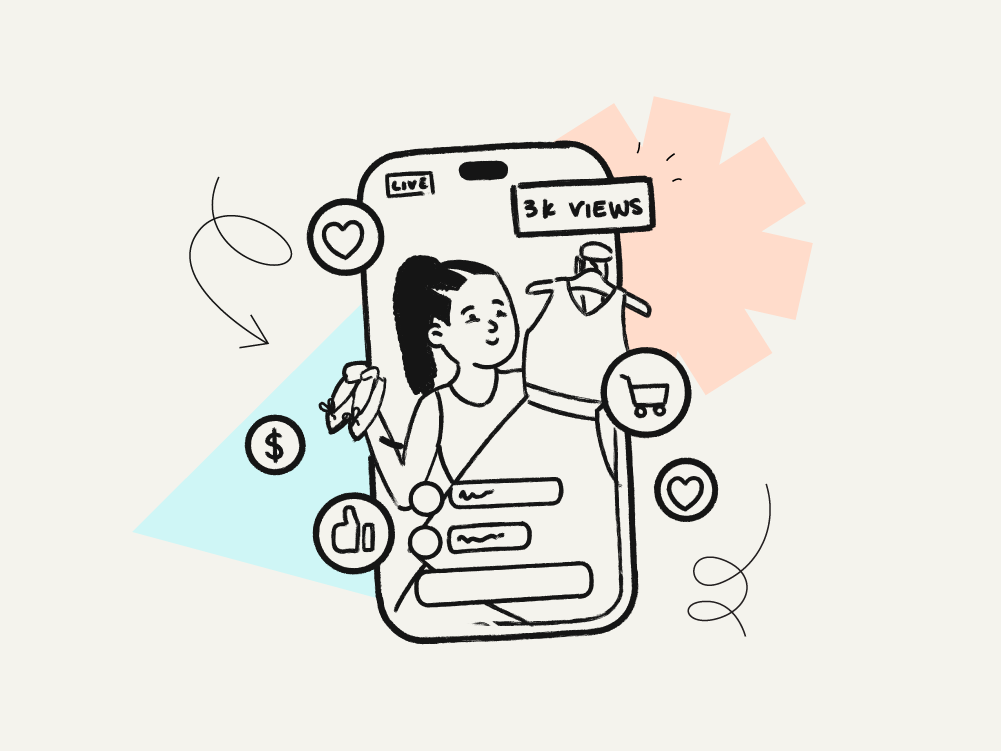It seems like the instagram algorithm changes every single week, and every single change brings absolute chaos.
One minute hashtags are the best way to gain likes, then they’re completely ineffective.
The next minute carousels drive more engagement than any other content type, then it’s videos.
Then you’re told you need to post 3x a day to drive any sort of interactions, then you only need to post every few days.
Will Instagram ever stop the pain? Will Cristano Ronaldo ever be knocked off the top spot? Is posting a picture of an egg the best way to gain likes?
Unfortunately, nobody knows exactly how the Instagram algorithm works (alright then, keep your secrets Mr. Zuckerberg), but we do have a good enough understanding to help you build a following, gather engagements, and improve your brand awareness.

What is the Instagram algorithm?
The Instagram algorithm is the set of rules and guidelines by which Instagram rates and distributes content.
Content that works better with the algorithm will receive a better ranking and then be shown to more profiles through suggestions, reel feeds, the explore page, and more.
The algorithm is what makes Instagram such a popular platform to use. It analyses every piece of content on the platform, understands what it’s about, looks at the engagements, and then distributes it in the best way for other users.
The key is to remember it’s designed to make Instagram as engaging as possible. So, when it feels like it’s working against you, chances are you’re not using Instagram in an engaging way for most people (sorry).
TL;DR? The Instagram algorithm looks at every piece of data about a piece of content and then determines who else it should be shown to.

How does the Instagram algorithm work in 2023?
The Instagram algorithm is based on 3 key factors:
- The creator-audience relationship
- General engagement
- Relevancy
Let’s take a look at each in a little more detail.
The creator-audience relationship
The first influential factor on the algorithm is your relationship with the potential audience.
Aspects of the creator-audience relationship that positively influence the algorithm:
- If they follow you
- If they regularly interact with you (likes, comments, DMs)
- If they share your content with other people
It sounds obvious, but someone who follows you, regularly likes your content, and shares it with their friends is far more likely to see one of your posts than someone who does none of those things.
Someone who doesn’t follow you, but was sent your content by a friend, likes it, and shares it on to another friend is far more likely to be suggested your content than someone who’s had no interaction with you.
TL;DR? The more engaging content you make, the more likely it is to be shared, the more likely you are to build followers, reach, and engagements.
General engagement
The next factor is how regularly the potential audience engages with the type of content you’re putting out.
If a user generally engages with a similar style of content to what you’re producing, they’re more likely to be shown your posts.
For example, a user might not follow you, but they might follow one of your competitors who’s posting something pretty similar to you. That user is more likely to be suggested your content over someone who follows none of your competitors.
TL;DR? Similar content turns into suggested content which (hopefully) turns into engagements.
Relevancy
Instagram’s algorithm will decide how relevant every piece of content is to both the user and the current context of the platform.
If your content is related to a trending topic or even if it’s been posted more recently, it’s more likely to be shown to more users. That’s why the first posts you see when you open Instagram are the most recent pieces of content from your favourite profiles.
Relevancy also includes the style of content you’re creating. For example, reels are currently incredibly popular - even being given their own feed - so creating reels is a great way to produce relevant content to positively influence the algorithm.
TL;DR? Content posted more recently that uses current trends and popular formats will be shown to more users.
Factors out of your control
Whilst there are things you can do to help your content reach a wider audience, there are certain areas you can’t influence.
- Frequency of use: Users who don’t use Instagram as often are more likely to only be shown the most relevant content to them. That means only the content Instagram thinks is best for them will reach their screens.
- Length of use: The same goes for how long they’re on the app. If a user only goes on Instagram for 5-10 minutes a day, Instagram is only going to show them the content guaranteed to engage them right away. There’s no room for potential filler.
- Number of follows: The more profiles a user follows, the less likely they are to be shown content from profiles outside their following list. Though, there is a limit*
*The last one is tricky.
Even if a user follows you, they’re not guaranteed to be shown your content.
Users follow hundreds, if not thousands of profiles, so they can’t be shown all of the content from profiles they follow all the time.
You could have a million followers, but still see your engagement drop as your followers stop seeing your content. This isn’t Instagram out to get you, it’s probably just that your content isn’t as engaging as it used to be, so it’s being replaced by more-exciting content from other profiles on their feeds.
If that’s started happening to you, it’s time to shake things up.
Where the algorithm learns about your content
In order for Instagram to understand what your content is about and therefore, accurately judge it, it pulls information from various areas of your post.
These areas are your:
- Image
- Caption
- Hashtags
- Location
- Time
- Comments
- Likes
- Saves
- Length (if a video)
- Activity (what content you’ve been interacting with and who you’ve been interacting with)
That’s a lot to be dealing with, but also, a lot of areas to influence the algorithm.
The more areas you can show Instagram that your content is something that others would be interested in, the more likely it is to be shared.
The Explore page
Instagram’s Explore page, now located in the Search page, is where you’ll find popular content relevant to you from profiles you don’t follow.
Generally, this content is more reactive to your recent likes and interests.
For example, if you’ve just seen the latest Star Wars movie and have been scanning the platform for reviews, you’ll see quite a lot of Star Wars content on the Explore page (as well as a few longer-standing content interests).
The actions that the algorithm pays the most attention to on the Explore page are views, likes, saves, and shares.
Reels
When Meta saw TikTok making such dramatic strides, they knew they had to do something about it - and their answer was to completely copy it and make Reels.
Similar to the explore page, the Reel feed is mainly made of content from users you don’t follow, but differently to the explore page, you only see one piece of content at a time.
Equally, whilst likes and comments are great indicators for how popular a piece of content is, watch-time and replays are what Reels are judged by most.
If a user watches your video all the way through, that’s a big tick. If they then re-watch the video, that’s an even bigger tick. If they re-watch a video and share it, that’s a massive tick.
That set of actions tells Instagram you liked a video so much that you wanted someone else to watch it, which they’ll have to come onto Instagram to do, increasing their user base and platform engagement.
The more you can drive other people to use Instagram, the more Instagram values that engagement. So making Reels that users want to share is vital to building your profile’s audience.

How to use the Instagram algorithm to get more likes, comments, and followers
Now you have an understanding of how the Instagram algorithm works, let’s take a look at how you can use it to your advantage.
Focus on your followers
It sounds obvious, but you need to be creating content your audience engages with most - and then quickly engaging back with them.
Let’s say there’s a particular piece of content that generates a lot of comments. After it’s been posted, put an alarm on your phone to go off every 30 minutes for the next couple of hours reminding you to reply to those comments.
And when you go to post your next piece of content, go back and reply to the comments on the last piece. Not only then will that boost the number of engagements on your post, but the people you’re replying to will go and check out your latest post, too.
Instagram rewards creator-audience interactions, so the more of those you can make, the more likely your posts are to reach a wider audience.
Engage with trends
Trends are the easiest way to build engagement and get the algorithm to work in your favour.
Take a look at both the content themes and formats that are working right now and try to replicate them for your business. Is there a popular meme format? Are there trending sounds? Is there a hotly debated news topic in your niche?
But don’t just copy exactly what other people are doing. Take the trend and make it yours.
Get strategic with your outreach
In order to get more people to engage with you, you need to go out and engage with them.
Find some popular profiles in your niche and comment on their posts - just make sure your comments are valuable and natural.
Don’t just comment ‘Hey! Check out my page!’ Actually engage with the content they’re putting out, and see if you can add anything to the conversation. There’s a lot to be said for just showing that you’re part of the community.
The Instagram algorithm will see you’re actively engaging with these accounts and attribute their style to yours - and if some of their followers end up following you, that shows Instagram that your content is probably quite similar, boosting your chance of being shown to more that profile’s followers.
Stick within community guidelines
This one’s very straightforward.
If your content doesn’t comply with community guidelines, Instagram will take your post down, and if that keeps happening, Instagram will suspend your account.
Needless to say, this does quite a bit of damage to your algorithm ranking and can take quite a long time to build your momentum back up.
Unless you’re posting graphic, illegal, political, or uncomfortable content, you’ll most likely be fine - but Instagram has been known to be extra sensitive at times.
You can find out more about Instagram’s community guidelines here.
Think about timing
As we’ve already mentioned, relevancy is a big factor in determining whether your content gets seen - and a big factor for relevancy is how recently the content was posted.
Use your analytics to find out when your audience is most active and schedule your content for that time.
For example, if you see your audience are mostly active between 6-9am on their morning commute, scheduling a post to go out at 6am and a few stories for the hours after can stick your brand front and centre on their feed.
Post frequently
Posting frequently gives your audience more opportunities to engage with you and gives you opportunities to find out what content works best.
Also, when you post frequently and at regular times, your audience will begin to expect your posts, looking out for them when they login.
Similarly to the above, work out when your audience are most active and regularly schedule content for those times - they’ll then look forward to seeing your posts at a time they’re more likely to engage with you.
Be original & test
As much as following trends is a good way to use proven content methods to your advantage, Instagram rewards originality.
Adam Mosseri, the Head of Instagram, said in a reel:
“If you create something from scratch, you should get more credit than if you’re resharing something that you found from someone else. We’re going to do more to try and value original content more, particularly compared to reposted content.”
So, make sure you’re adding a dose of originality to your trends as well as testing new original content.
You never know, you could create the next trend for everyone else to copy..
Analyze and adjust
And as with all of your marketing channels, make sure you’re consistently tracking and analysing your posts’ performance.
You can do this through Instagram’s own insights or through a scheduling tool, such as Buffer, Later, Hootsuite, or Sprout.
Make a note of the content that gathers the most likes, comments, and shares individually and as a whole. The posts that drive the most likes may not necessarily drive more comments and shares, so don’t get stuck staring at one metric.

Final Thoughts
If there’s one thing you take away from this article, it should be to focus on your audience.
Do what makes them positively engage with you, keep doing that, and evolve as you test new styles.
Remember, Instagram wants you to succeed so you can help them bring in more users, so think about what you enjoy about Instagram and replicate that.
Chances are you’re a lot closer to the ideal route than you think.
If you want to learn more about how to create an effective social strategy for your Shopify store, discover our guide, What is Organic Social? [Definition & Tips].

Skyrocket your Shopify sales with a no-code Apple & Android mobile app. Available now on the Shopify app store.




![The Instagram Algorithm Explained [2024]](https://cdn.prod.website-files.com/65032a484503b480e96d2a67/65032a484503b480e96d2c98_The-Instagram-Algorithm-Explained.webp)










.webp)
